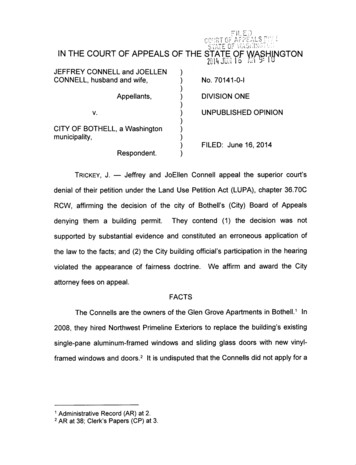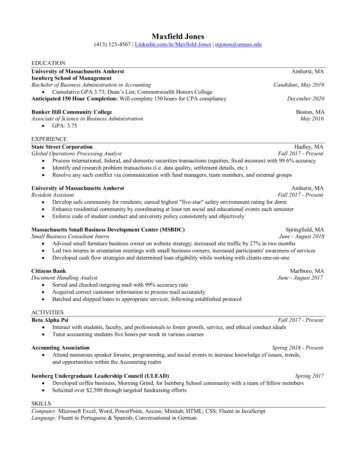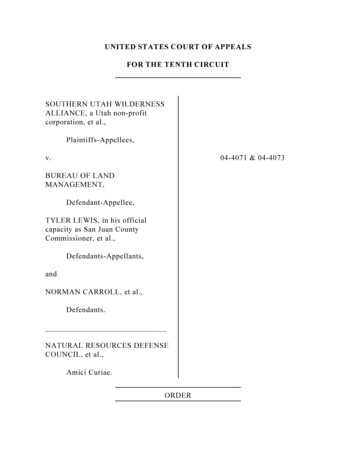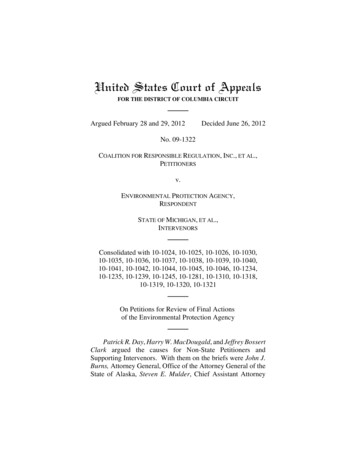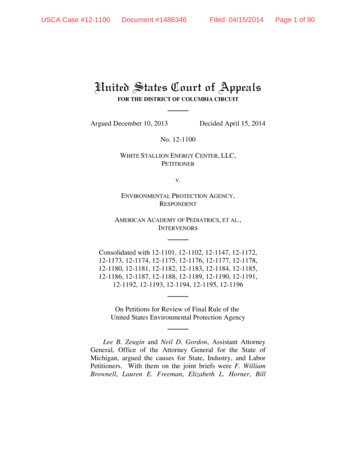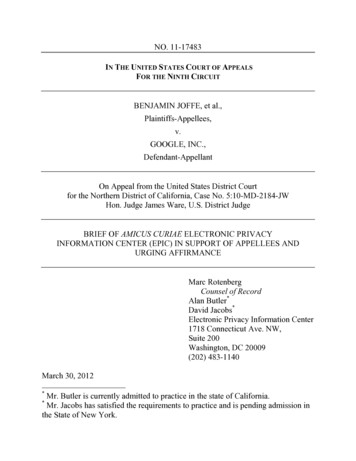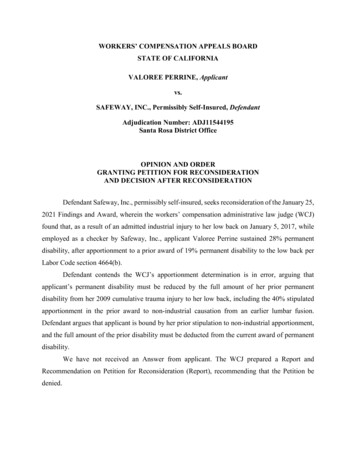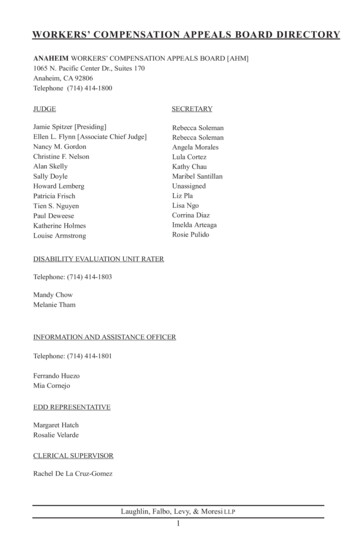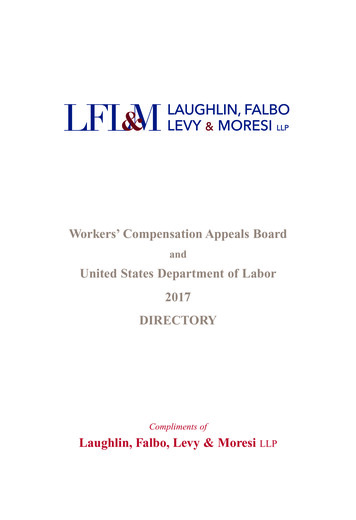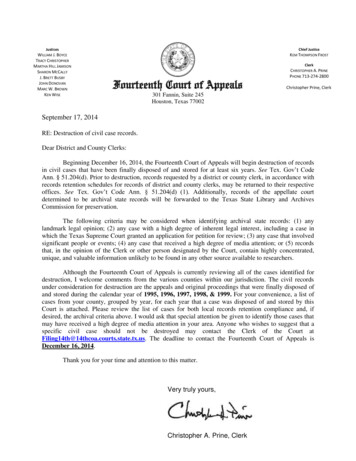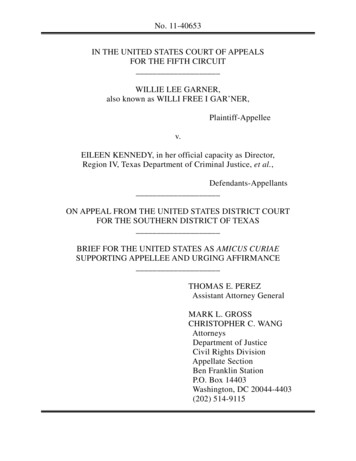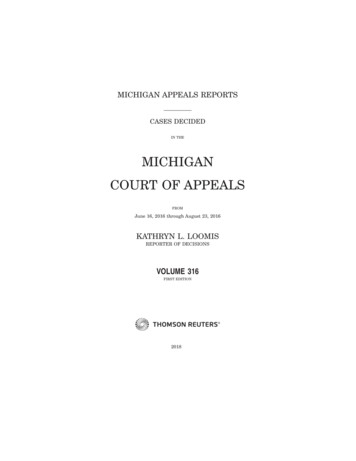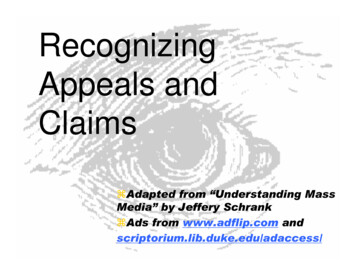
Transcription
RecognizingAppeals andClaims Adapted from “Understanding MassMedia” by Jeffery Schrank Ads from www.adflip.com andscriptorium.lib.duke.edu/adaccess/
Advertisers use claims andappeals to convince us topurchase their products.Let’s take a closer look at each and view some samples ads.
Sex appeal Sex is used to sell theproduct. Here a model is usedto sell shoes.
Snob appeal The consumer will jointhe ranks of the elite byusing the product The ad reads,“Extraordinary food forextraordinary dogs.” Adog will join the ranksof the elite by eatingthis dog food.
Appeal to authority(Testimonial) This selling device dependson a television star, anathlete, or other publicpersonality to endorse anitem. Use of the product will makethe consumer as wealthy, asfamous, as talented, or asbeautiful as thespokesperson.
Plain folks appeal Reverse snob appealapplies here. In theseads the intent is to appealto the average person. This ad is geared towardwomen with averagebodies. It wants thesewomen to believe thecompany has created aproduct with just them inmind.
Bandwagon appeal This appeal worksbecause most of usdon’t want to stand outby being different, andwe want what othershave. The ad says that “Cokeis the most asked-forsoft drink in the world.”
And now for the claims.
Scientific or statisticalclaim This kind of ad refers tosome sort of scientific proofor experiments, to veryspecific numbers, or to animpressive-soundingmystery ingredient. “Certs contains a sparklingdrop of Retsyn.” Whatexactly is “Retsyn”?
Compliment the consumerclaim This claim butters up theconsumer with some sort offlattery. The ad reads, “We specializein the creation of individualcars, built to individualrequirements, each asindividual as it’s owner.” It’strying to compliment theconsumer for being anindividual.
Compliment the consumerclaim In what way does thisad compliment theconsumer?
Rhetorical question claim This technique poses aquestion that is worded insuch a way that theconsumer’s answer affirmsthe product’s goodness ordesirability. The ad reads, “Are you in?”It suggests that being “in”the car is what we shouldwant.
Rhetorical question claim What rhetoricalquestion does this adask?
Unfinished claim The unfinished claimsuggests that a product is“better” or has “more”, but itdoes not finish thecomparison. The ad says Plax removesmore plaque than brushingalone, but it does not tellhow much more.
Unfinished claim What unfinished claimis made here?
Weasel word claim Weasel words areused to makeproducts seemspecial or unique. Some of the mostcommon weaselwords are listed to theright.
Weasel word claim The ad says Cascadegets dishes “virtuallyspotless”. Theadvertiser hopes weremember the wordspotless and forgetthe word virtually.
Is that all? Advertisers do employ more than just theappeals and claims listed, and theyfrequently use more that one appeal or claimin each advertisement. Use what you learned to figure out thedifferent appeals and claims used in each ofthe following six ads. Some ads have morethan one appeal or claim. Find at least oneclaim or appeal for each ad.
Ad number one
Ad number two
Ad number three
Ad number four
Ad number five
Ad number six
Weasel word claim Weasel words are used to make products seem special or unique. Some of the most common weasel words are listed to the right. Weasel word claim The ad says Cascade gets dishes “virtually spotless”. The advertiser hopes we remember the
